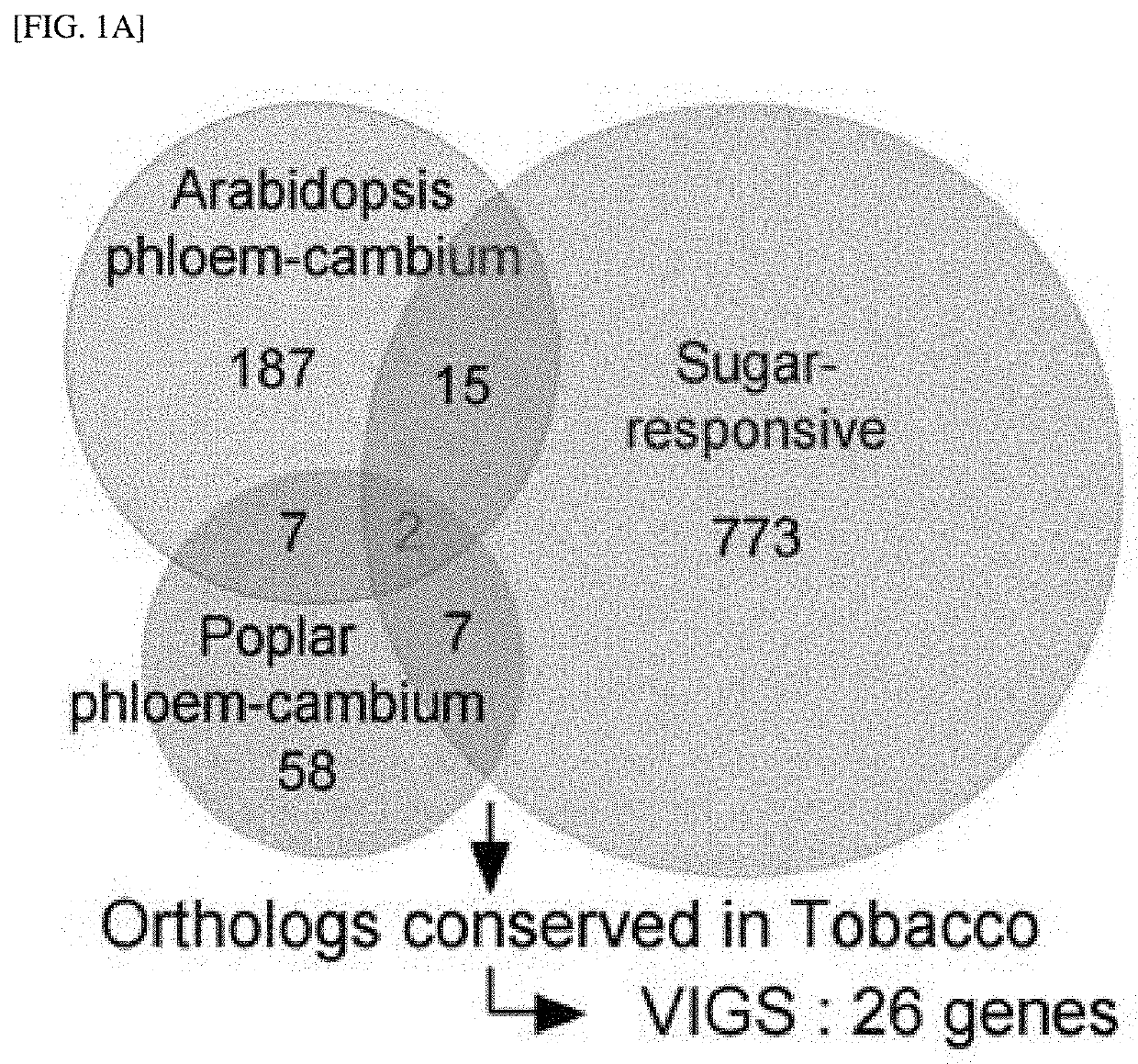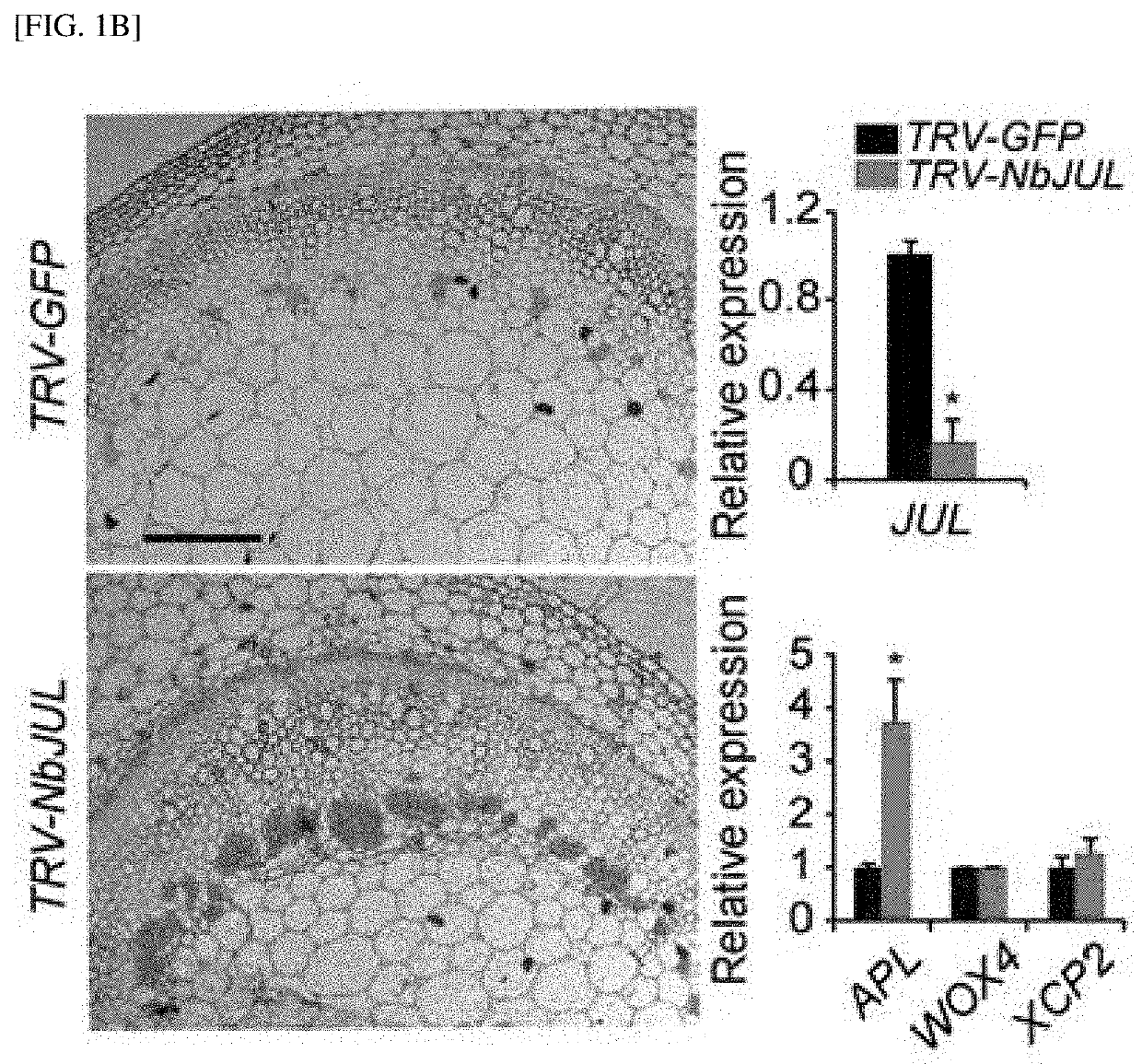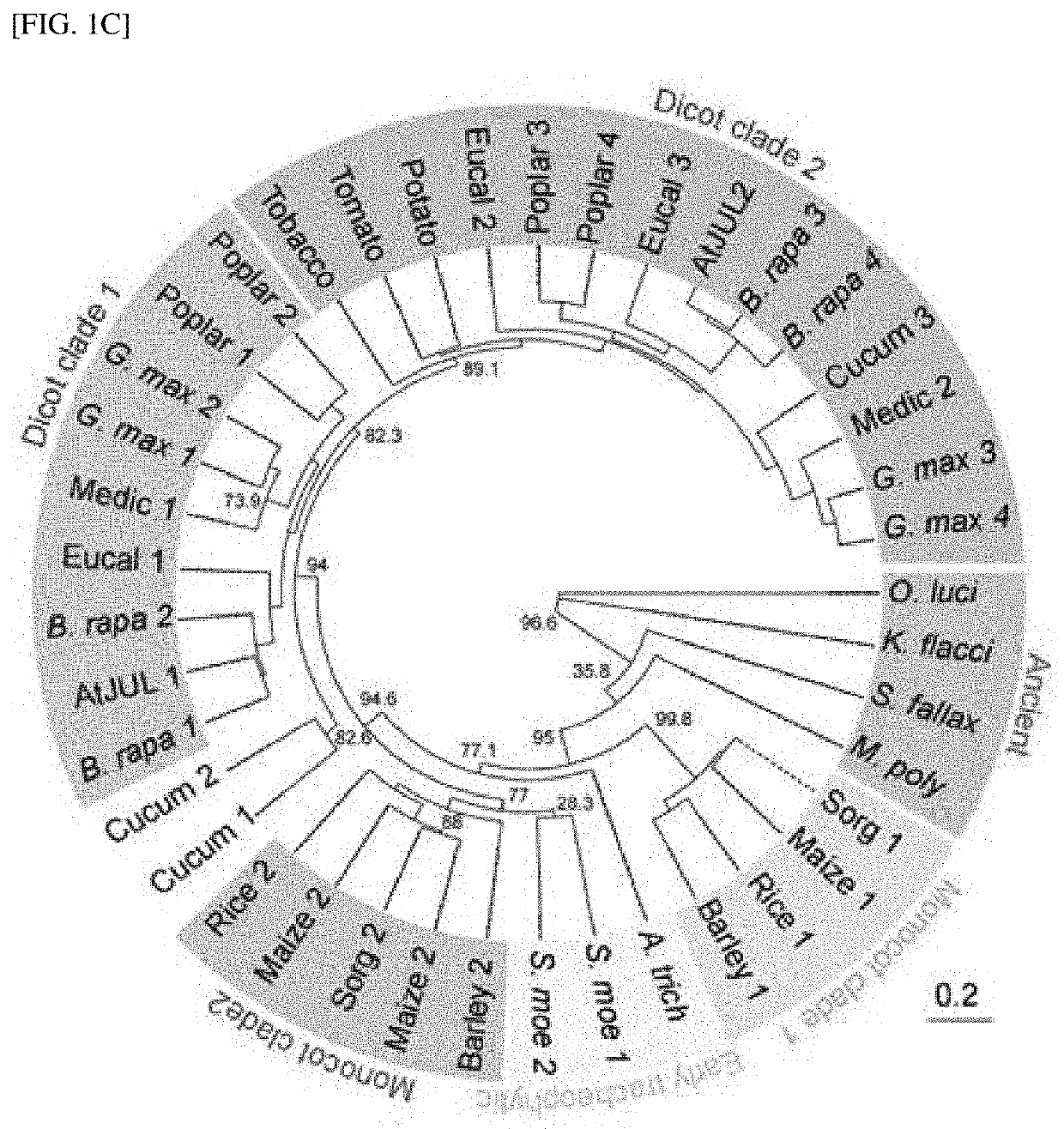Composition for increasing nutrient storage capacity of plant nutrient storage tissues, containing julgi protein expression or activity inhibitor
a technology of plant nutrient storage and sink tissue, which is applied in the direction of peptide sources, bio chemistry apparatus and processes, etc., can solve the problem that no gene suitable for artificially regulating phloem development by humans has been found, and achieves the effect of promoting phloem development, promoting phloem development, and negative regulating the phloem development of plants
- Summary
- Abstract
- Description
- Claims
- Application Information
AI Technical Summary
Benefits of technology
Problems solved by technology
Method used
Image
Examples
example 1
tal Preparation and Methods
[0084]1-1. Preparation of Plant Models
[0085]In this example, col-0 and WS-2 ecotypes of Arabidopsis thaliana were used as wild type and transgenic lines, respectively. All seeds were germinated in media containing 1 / 2 Gamborg B5 salt (Duchefa, Netherlands), 1% sucrose and 0.8% phytoagar (pH 5.7) under long-day conditions (16 h light / 8 h dark) at 24° C. After a week, the seedlings were transplanted into pots and grown under long-day conditions as described above. Smx15, smx14 / 5, pSMXL5-YFP and pSMXL5-SMXL5-YFP in smx14 / 5 lines were provided by Thomas Greb (Heidelberg University, Germany), and jul1(FLAG_293A10; 5′ UTR insertion) and jul2 (GK-268A03-015068; 5′ UTR insertion) were obtained from ABRC. Meanwhile, protoplasts were isolated from fully-expanded leaves of 3- to 4-week-old plants after plants were cultured under short-day conditions (10 h light / 14 h dark). Tobacco (N. benthamiana) seeds were sown and cultured under long-day conditions at 26° C. for 5...
example 2
ation of JULGI as Negative Regulator of Phloem Differentiation
[0132]2-1. Identification of JUL Gene
[0133]The inventors studied a fundamental mechanism of phloem formation in the evolution process of vascular plants, and here, hypothesized that carbon allocation throughout an entire plant body was optimized by regulating phloem differentiation by photosynthates, such as sugar. To verify the hypothesis, transcriptomes of the phloem / cambium region of a woody plant (Populus tremula), an herbaceous plant (Arabidopsis thaliana), and sucrose-regulated genes of Arabidopsis thaliana were comparatively analyzed. As a result, as shown in FIG. 1A, interestingly, it was confirmed that two sugar-regulated genes such as At3g15680 and At2g28790 are expressed even in the phloem / cambium of Arabidopsis thaliana and Populus tremula.
[0134]Next, the functionality of two candidates and 24 genes selected through computational and literature analysis as putative vascular regulators and controls were examin...
example 3
ation of G-Quadruplex Motif, as Target of JUL, in 5′ UTR of SMXL4 / 5
[0139]As shown in FIG. 2A, JUL1 and JUL2 have three RanBP2-type ZnF domains, each of which has a conserved arginine residue (R20, R80 and R146 in ZnF1, ZnF2 and ZnF3, respectively), which is required for RNA binding. Therefore, to examine whether ZnF domains of JUL1 are necessary for phloem differentiation, the inventors overexpressed four JUL1 mutants in which arginine was substituted with alanine, such as JUL1R20A, JUL1R80A, JUL1R146A, and JUL1R20 / 80 / 146A, and their effects were analyzed. As a result, as shown in FIG. 2A, similar to the results in the case of JUL1 and JUL2 silencing (JUL1 / JUL2 RNAi), it was confirmed that all of the plant bodies expressing the mutants show significant increases in phloem cells, compared with the wild type (Col-0). These results indicate that ZnF domain mutants function as the main negative forms of JUL1 and by potentially interfering with the binding of proteins that interact with ...
PUM
| Property | Measurement | Unit |
|---|---|---|
| pH | aaaaa | aaaaa |
| temperature | aaaaa | aaaaa |
| pH | aaaaa | aaaaa |
Abstract
Description
Claims
Application Information
 Login to View More
Login to View More - R&D
- Intellectual Property
- Life Sciences
- Materials
- Tech Scout
- Unparalleled Data Quality
- Higher Quality Content
- 60% Fewer Hallucinations
Browse by: Latest US Patents, China's latest patents, Technical Efficacy Thesaurus, Application Domain, Technology Topic, Popular Technical Reports.
© 2025 PatSnap. All rights reserved.Legal|Privacy policy|Modern Slavery Act Transparency Statement|Sitemap|About US| Contact US: help@patsnap.com



